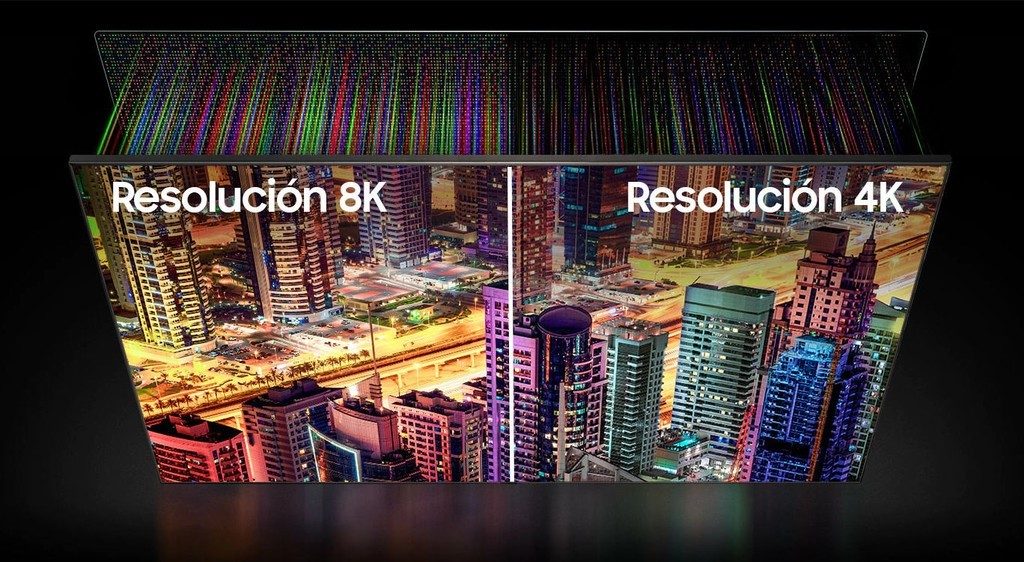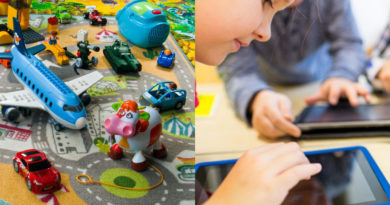Hi, Bixby, Why Is 8K The Resolution Of The Future?
Voice assistants have settled in our lives in a natural and progressive way. Talking with technology is becoming a common form of interaction with our devices thanks to these digital helpers based on technologies such as Artificial Intelligence, the cloud and mobile communications. The adoption is still fast, something that we also see with other technological trends such as those that come from the world of television and multimedia content with the jump to 8K resolution. Here are the more about Bixby, the Samsung assistant
Samsung, without going any further, has integrated the voice as part of the possibilities of interaction with its devices from previous times to the attendees and making it evolve until reaching Bixby. Samsung’s voice assistant, optimized and designed for your devices, are able to learn from users and adapt to them in a personalized and unique way.
Bixby, the Samsung assistant
Bixby began its journey on Samsung smartphones. Gradually, the Korean company has been introducing the assistant in other product families, as in the case of Smart TV televisions. Bixby allows us to communicate with our devices through voice using natural language instead of just using isolated commands. In the case of televisions, we can ask Bixby questions about the movies we want to watch, about when they put on a certain program or about cast data, and so on.
Through Bixby, in the range of QLED 8K TVs of 2019, we can even turn on the TV without using the microphone on the One Remote, as well as making changes to the device settings. For a few months, Bixby has spoken fluently in Spanish, so language will not be a problem. In addition, Samsung has integrated into the 2018 models the compatibility with other assistants such as Google Assitant or Amazon Alexa.
But, let’s go with the important question, the one that has brought us here. Why is 8K the resolution of the future?
Where we come from?
Television emerged well before the advent of digital technology. In the same way that has happened with music, photography, the press or the cinema, television has seen how analogue technology has been giving way to digital at an exponentially growing rate. On analogue television, the resolution was measured in lines. Specifically 625, of which 576 were visible. Now, it is also measured that way, but adding more lines and counting the pixels by millions.
Going to pixels, we talk about values of, for example, 640 x 480 pixels for analogue television and for media such as DVD. This support came in 1996 with many bits under the arm and with digital content stored in optical media, although mostly reproduced at first through analogue devices.
The first flat TVs arrived in 1988 and were 14 inches, with barely 300,000 pixels. The rise of LCD TVs would not come until the 2000s, with resolutions 720p first and then 1080p. 4K TVs (2160p) arrived in 2013 and, since a few months ago, there are already 8K (4320p) TVs from Samsung. The family of Samsung QLED 8K TVs receives in these weeks its second technological generation, with new functions, greater diversity of inches and new generation connectivity.
The number of pixels associated with each resolution increases in a non-linear proportion with each quality jump. Thus, in 720p we have that each frame has a million pixels (or 1 Mpx). In Full HD we go to 2 Mpx. In 4K we have 8 Mpx and in 8K we have 33 million pixels).

Bixby
8K, the resolution of the future?
This is one of the reasons why 8K is a very important leap in terms of the amount of detail contained in each frame: we go from 8 million pixels to no less than 33 million. To get an idea of what this jump means, we can relate it to digital photography, where 8 million pixels are considered scarce under current standards, but 33 Mpx are already a number of pixels that we find only in professional cameras.
That is, each frame of a film encoded in 8K, has 33 million pixels. In this way, if we freeze a frame, we will have nothing less than a photo with an amount of detail that will allow us to explore the scenes as if they were photographs.
4K as if it were 8K
At the moment, the 8K content that is currently limited to a few that we can find on Vimeo channels and soon on YouTube. We also find content on media such as Blu-Ray or DVD. And some streaming platforms are already preparing video releases in 8K.
What manufacturers like Samsung have done in 8K TVs such as the new Q950R this year and in the Q900R of the first 8K generation, is to integrate components capable of moving the 33.2 million pixels of each frame of 8K content, as well as apply AI techniques capable of scaling contents with a resolution lower than 8K up to 8K.
With the Q900 model, we already tested at the time, comparing 8K content with the same 8K content transformed to 4K by editing in professional software, verifying that the differences were virtually negligible and asserting the suitability of the MLSR (Machine Learning Super scaling system) Resolution) used by Samsung in its QLED 8K proposals.
The more pixels, the more realism
8K TVs have such an amount of pixels, that at normal viewing distances in a traditional room, it is very complicated, if not impossible, to see each pixel separately. However, according to the study ‘Sensation of Realness From High-Resolution Images of Real Objects’ by Japanese optical engineering expert Kenichiro Masaoka, it’s not just about perceiving individual pixels or not.
According to this study, the more pixels, the greater the sense of realism we get from the contents that we visualize on a screen. The eye does not perceive the individual pixels, but with 8K the colour gradients, for example, are shown in a much more natural way before the eye.
8K is an optimal compromise solution between the number of pixels and both qualitative and quantitative image quality.
Content creators will use 8K
At the moment there are not many contents recorded in 8K, but movies like ‘Guardians of the Galaxy Vol. 2’ have already been filmed using 8K cameras. These films may not be screened (for the moment) in their original format, but it is easier to create copies at lower resolutions starting at 8K than remastering recorded content at a lower resolution.
Anyway, the Tokyo 2020 Olympics will take place next summer. In that event, the conditions for the genesis of the “perfect storm” of 8K will occur: sporting events are usually the perfect pretext for new audiovisual technologies to be tested and, on the other hand, Japan loves 8K technology. Companies like NKH are already very advanced in this field, with usual emissions in this resolution, for example.
Once again at the forefront of technology, on June 13 Samsung in collaboration with the Repsol Honda Team presented the first 100% native 8K recording of the test tests of the MotoGP World Champion team. The audiovisual content will be available soon on the team’s website.
The tendency is to capture content in 8K, and it is even some smartphones already do. In addition, thanks to the storage capacities of 1 TB as in the case of some Samsung Galaxy S10 terminal models, the advantages of capturing images and videos in 8K will soon be available to all users.
With 5G streaming, 8K will be possible on a regular basis
Streaming broadcasts are, nowadays and almost entirely in Full HD (1080p), with the possibility of uploading to 4K in some cases if the connection we have is suitable for maintaining sufficient transfer rates and latencies so that the Emissions are fluid.
Some video on demand providers offers connectivity recommendations for different display qualities, signalling a minimum connection of 25 Mbps for 4K streaming. For 8K content, if we follow the proportions seen for the resolution of the frames, we would need a minimum of between 60 and 80 Mbps.
Right now, the most ambitious fibre connections of 300 or 500 Mbps and even 1 Gpbs would already allow for this kind of quality. With 5G mobile technology, once the complete network infrastructure has been deployed, the speeds of 1 Gbps will be possible in a generalized way and not only in environments where there is fibre.
Tailored connection
Connections are also an important piece of the equation. At the moment, the standard is HDMI 1.4 or HDMI 2.0. HDMI 1.4 allows bit rates of up to 10.4 Gbps, while HDMI 2.0 reaches up to 18 Gbps. However, 8K requires higher bit rates to travel through a cable.
Samsung’s new TVs, such as the QLED Q950R, include this type of connectivity in their One Connect external junction boxes. In this way, it will be feasible to handle 4K and 8K content with more flexibility and using devices such as external storage units or high-quality digital media and high bit rates.
8K: more is more
The first impression when talking about 8K is to ask ourselves why we want so many pixels when in practice there are hardly any contents. As we have seen, we are facing an elegant technology with many aces in the sleeve. For now, photographs of more than 16 million pixels are content that is worth seeing on screens with a high number of pixels.
In addition, if the scaling system is good, as is the case with MLSR (Machine Learning Super Resolution) technology supported by Samsung’s artificial intelligence, we can enjoy 8K content from 4K without apparent quality losses.
8K(Bixby) opens the doors to a more pleasant and reliable perception of content than the perception of 4K content. And content creators are targeting 8K as a desirable goal. In Japan, they already have it active, for example, on a regular basis, and large film or television productions are already using 8K.
As we have seen, it is even feasible that we begin to capture 8K content with our mobiles in a generalized way in the next technological generation. In addition, prices tend to fall. More ambitious models are introduced in sections such as inches, while those of fewer inches and previous generations reduce their price at a progressive pace and that does not go unnoticed.
8K combines very high image quality with technological requirements that are already within reach of our devices and our connection modalities, waiting for 5G to be deployed on a regular basis.
